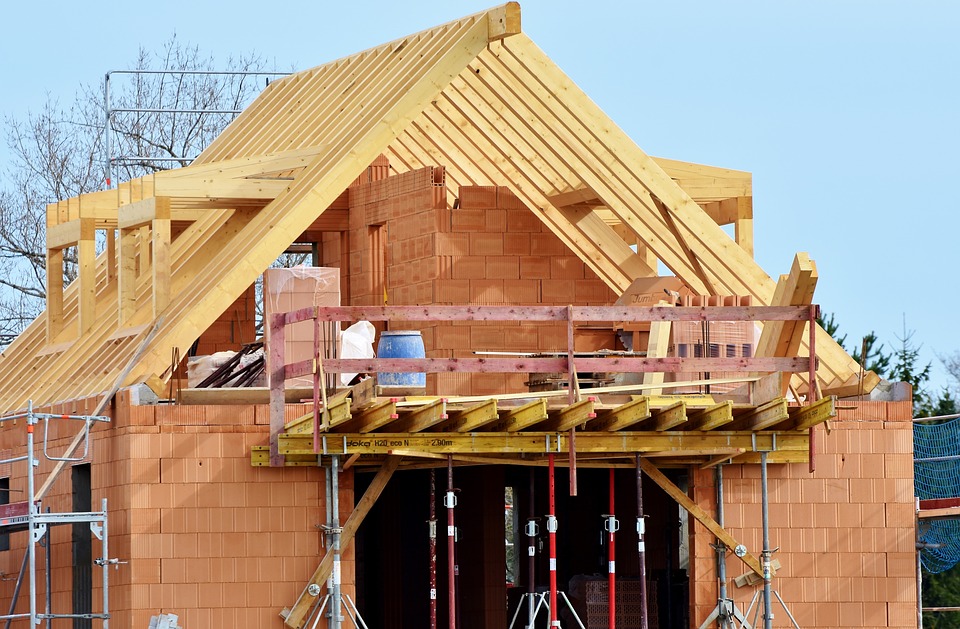Daring investors are dipping their toes back into UK housebuilders, attracted by high dividend yields and low valuations even though they are seen as among the most vulnerable sectors in the event of a messy Brexit.
As Britain’s exit from the EU remains shrouded in fog, housebuilders have been top targets for short sellers betting on a fall in the shares, but recent data shows short positions have fallen and some investors are buying back in.
To those investors, Brexit fears and the perceived risk to housebuilders also give the potential for strong rallies. Indeed, British housebuilder stocks have risen 11 percent since their December low and Taylor Wimpey has shot up 30 percent since then.
“I like it when there’s a short. You can have good returns when there are disagreements,” said Fabrice Theveneau, head of global equities at Lyxor Asset Management in Paris, who has recently bought shares in some UK housebuilders.
“The guys who’ve been shorting the housebuilders made a lot of money on them… they could very quickly turn their positions.”
In the last thirty days, the level of short interest has fallen for most UK housebuilders, data from FIS Astec Analytics shows.
Shares in the UK’s biggest listed housebuilders fell between 26 and 33 percent in 2018 as housing data increasingly showed a severe slowdown in sales volumes and prices, blamed in part on the uncertainty surrounding jobs and growth after Brexit.
British property surveyors are the most downbeat about the short-term outlook for house prices in nearly eight years, a survey on Thursday showed, as buyers and sellers shy away from major financial decisions.
London and the South-East have led the slide in house prices and sales. Yet a Deloitte survey found construction in four regional cities is booming.
Investors are using that regional divide to guide their choices.
“We try to avoid those mostly focused on London, like Berkeley. We prefer Taylor Wimpey, Persimmon, and Barratt Developments,” said Lyxor’s Theveneau.
TARGETED STRATEGY
Data from FIS Astec Analytics shows short sellers are even differentiating between London-focused builders Berkeley and Crest Nicholson.
Crest Nicholson has seen short interest increase significantly, with a utilisation rate (percentage of total shares borrowed) as high as 32 percent.
Last year, Crest Nicholson pulled back from London, closing its office there in a bid to reduce its dependence on the UK capital’s faltering housing market where prices were falling and costs were rising.
“We have faced some challenges in London and with sales at higher price points where political and economic uncertainty has adversely impacted customer demand… this is likely to continue pending Brexit resolution,” it said in January.
The company which focuses on the south of England has moved into the Midlands in a push into more affordable areas, and has postponed opening its new South East division.
Rival Berkeley Group, which also has significant exposure to London, has meanwhile seen short interest fall since the Brexit vote.
Charlie Campbell, an analyst at Liberum, put this down to the housebuilder’s more international customer base which could insulate it from falling confidence among UK buyers.
Berkeley Group has sales offices in Dubai, Bangkok, Singapore, Hong Kong, Beijing and Shanghai.
Another strategy followed by some investors is to home in on stocks that could show more resilience in the face of slower sales and low buyer confidence.
Paul Mumford, fund manager at Cavendish Asset Management, owns Telford Homes because of its focus on building in non-prime, “up and coming” areas of London, and its policy of forward selling developments.
Mumford also owns Henry Boot, Daejan, and St Modwen, which he says are more insulated from the cyclicality of the housing market because they are more exposed to the commercial property market.
OVER-OPTIMISTIC?
How much of the hard Brexit scenario is discounted in housebuilder shares is key to investors seeking to find value.
Redburn analysts say current valuations factor in a roughly 30 percent decline in EBIT (earnings before interest and tax) this year, which would imply a 5 percent fall in house prices and 10 percent fall in volumes. The analysts have no sell recommendations in the sector.
That is a far more benign scenario than the 35 percent fall in house prices over the next three years predicted by Bank of England governor Mark Carney if the UK exits without a deal.
There is no date yet set for a new vote on May’s Brexit deal, but share prices have been climbing despite the lack of any clarity.
“The big question is not what happens today but where are we in the middle of summer, is all this behind us?” said Liberum’s Campbell.
“If it is, then the shares are pretty cheap, but if we’ve just gone through a disorderly Brexit you could look back at the shares and at this point in time you might think we were all a bit over-optimistic.”
Source: UK Reuters





